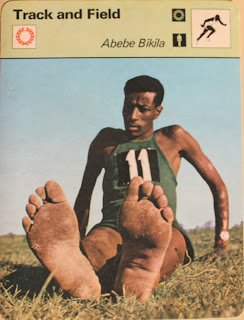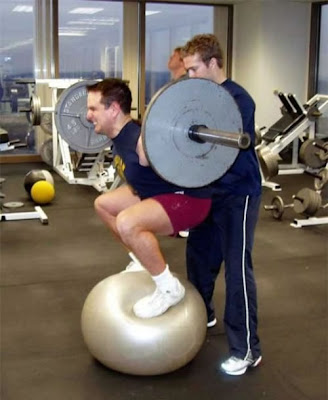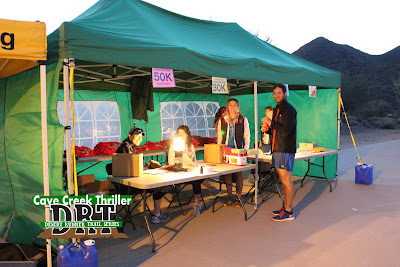As you
may have noticed, I've been up to my ears in huaraches lately (and bears, but that's a different story). That's not a bad
thing (although the recent snow in Show Low has made getting in test runs a bit
more difficult), especially considering the quality of the sandals I've gotten
to try. What's really made the experience especially interesting is that--in
stark contrast to the minimalist shoe industry as a whole, where giants like
Merrell and New Balance have taken over--the running sandal industry is dominated
by a number of tiny startups founded by one or two outdoorsy types with a
penchant for tinkering.
 |
| The Bedrock "Adventuremobile" |
Bedrock
sandals is one of those startups. The company is based in
Harrisonburg, VA and was founded by two friends “with a shared passion for
barefoot running and geology” as a Kickstarter project in June 2011. Bedrock
currently only makes one model of sandal, the Earthquake V2, which weighs just over 3 ounces and retails for
$54. The V2 comes in whole sizes, or you can send in a foot tracing and have a
pair custom made. The custom option is free if you mail in the tracing, or $5
if you email the tracing. You also have your choice of strap color.
One cool
thing about Bedrock is that part of the price of every pair goes to maize and
bean seeds for Tarahumara families in Mexico. Also, your sandals come in a very
cool burlap bag (see the picture at top).
Construction
Overall
the construction is simple and solid, using good quality materials. The Earthquake V2 is
based on the classic Tarahumara 3-hole huarache design, but with a modern-style
buckled lacing system. The sole material is 6mm Vibram rubber which is
different from the Vibram rubber used by the other huaraches companies whose
sandals I’ve tried. It’s moderately dense and stiff, less so than the neoprene
used in the classic Luna and more so than that used in the Luna Leadville or
Unshoes Wokova Feather. It doesn’t seem to mold to my feet as much as either of
those rubbers. The tread is a pointillistic nub pattern.
I was a
little surprised by the shape of the sole. If you get a non-custom pair like I
did the sole is cut with a slight banana-shaped curve to it. This struck me as
strange when I first tried the sandals on since it doesn't really fit my foot
when it is still. The idea seems to be to allow the big toe to splay out to the
side without falling off the sole. Based on my experiences with sandals that
aren’t cut this way I don’t think it is really necessary since my toe doesn’t
usually fall off the sole like that. However, when I ran in the sandals they
seemed to fit my feet well without any noticeable extra sole material, so maybe
there’s something to the idea after all.
The laces
are strong nylon webbing. At the moment there are apparently two types of
webbing, one stiffer and more rugged than the other. Which type you get depends on
which color lace you get. According to the website the stiffer variety will be
available in all of the colors in the future. I got red so my laces were the
stiffer variety. The lace connects via a plug which is countersunk into the sole, so there isn't any bump under the toes.
The
unique feature of the Earthquake line is a piece of elastic rubber (made from
recycled bike tubing) attached to the inside of the lace behind the heel. This
is designed to keep the lace from slipping off the heel and also allows you to
slip the sandal off and on without adjusting the buckle. The clever thing
about this design is that the nylon lace is unbroken (more on that later).
The laces
adjust via a small plastic buckle. I’m not a fan of this buckle. I was never
able to get the sandal adjusted the way I wanted without taking it off my foot,
adjusting it, and putting it back on. Even off the foot I found it a bit tricky
to adjust, though not impossibly so. Fortunately, since the rubber tubing on
the heel allows the sandals to be slipped on and off, you only have to adjust
the sandals one time. Once you get them adjusted how you want them, you never
have to mess with the buckle again. (It is possible that the buckle would be
easier to adjust with the softer laces). [EDIT: the guys at Bedrock have since addressed this issue with an optional "Quick Fit Lacing" system. It looks like a real improvement, though it does add $10 to the price. More info here.]
Aesthetics
Overall,
I like the look of Bedrock sandals. They look normal enough to wear around town
without getting any funny looks and the laces come in attractive colors. My one
big complaint with the way Bedrocks look (and really my only big complaint with
Bedrocks in general, which tells you how vain I am) is that the tail end of the
laces sticks straight up. This was the case before and after I trimmed the end
of the lace. I know it’s not just me because the lace even does this in Bedrock’s
promotional pictures.
Comfort
For
casual wear the comfort level is decent but not superlative, meaning when I
wear them around they don’t bother me but I don’t spend the whole time thinking
about how comfortable my sandals are. When running, I like them a lot more. In
fact, when I run the sandals tend to just disappear on my feet, which is
exactly what you want them to do (and which isn't the case with a lot of huaraches with slip-on style laces). The laces feel fine between the toes and
the rubber tubing is very comfortable against the heel. I never had trouble
with anything rubbing.
Performance
The Earthquake
V2 really surprised me by how well it performed. The laces really work quite
well once you get them adjusted. Even on rugged trail they are very secure,
surprisingly so for a slip-on design. This is the big advantage of the way the
rubber tubing is integrated into the heel. Usually, when a sandal has an
elastic section in the heel it can allow the foot to slide off the back of the
sandal, especially when walking up steep terrain. The beauty of the Bedrock
design is that since the nylon lace is unbroken the foot can only slide back a
fraction of an inch before the nylon lace stops the foot and holds it in place.
The 6mm
sole works well on both the road and trails. Traction is good on both, although
I haven’t done any wet runs in them. Groundfeel is excellent. In fact, I wasn't
sure about how the sole would handle trails at first since the sole allows you
to feel every rock and piece of gravel you encounter (which I suppose makes
sense considering the sandal was designed by a couple of geologists). However,
after running an extraordinarily rocky 7 mile trail I have to say it has plenty
of protection for most runs. I’m going to wear something thicker for my (very
rocky) next trail ultra, but for just about anything else I would be confident choosing the Earthquake V2.
Conclusion
The
Bedrock Earthquake V2 is a great running huarache and a lot of fun to run in. It works well for road and
trail running and features the most secure slip-on laces I have tried. The main
downside is simply that the 6mm sole doesn't offer as much rock protection as a
sandal with a thicker sole, although in compensation you get much better
groundfeel.
You can
buy a pair on the Bedrock website.
///
Sandal
provided by the manufacturer
-----------------------------------------------------------------------------------------------------

Order my children's book about barefoot running: What Should I Put on My Feet to Go Run?











































.jpg)

.jpg)



